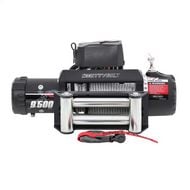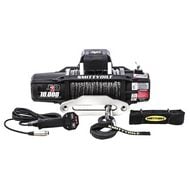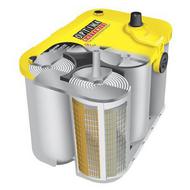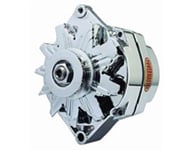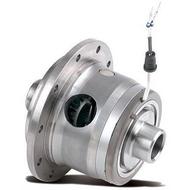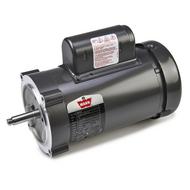Electric Winches: All About the Electric Winch
Electric Winches: All About the Electric Winch
Back to TopShop Synthetic Ropes by Brand
Back to TopWhy Electric Winches?
Electric Winches
An electric winch is exactly as its name would suggest: it is electrically powered by a vehicle’s battery, and as a result its duty cycle is limited by the amount of juice in your battery. Oftentimes, it is wise to run your engine while operating an electric winch to prevent your battery from fully draining.Hydraulic Winches
A hydraulic winch is powered by a vehicle’s power steering pump. What this means is that they are capable of an extended, seemingly endless duty cycle for longer pulls and a persistent flow of pulling power.
Again, Why Electric Winches?
Back to TopThe Framework of an Electric Winch
Battery
Alternator
Drivetrain
Spur Gear:
The fundamental design of a Spur Gear drivetrain dates back to the 1960s. It excels at offering reliable winching with a fast line speed. The drawback, however, is its lack of stability to hold loads, and typically requires a strong and functional brake. Worm Gear:
Worm Gear drivetrains are not usually found on electric winches for off road vehicles, but are ideally suited for industrial or workman applications. Their specialties are load holding and lowering, which makes them a popular choice for tow trucks. On the downside, they pull far slower than other electric winch types. Planetary Gear:
Think of Planetary Gear drivetrains as a hybrid of Spur and Worm Gear ones. They’re typically more compact, which allows for less weight and less cost, and they perform somewhere in between what Spur and Worm Gear drivetrains offer. Their biggest downside is heat accumulation on the brake unit. Planetary Gear drivetrains are what most electric winches use.
Motor
Permanent Magnetic (PM):
For casual winchers that don’t find themselves in extreme terrain or recovery situations very often, electric winches with PM motors are perfect. They offer decent pulling power and performance, their lower amp draw makes them energy efficient, and PM motor electric winches typically cost less. On the other hand, you won’t get the heavy duty performance you need to overcome the most difficult recovery situations, and while a PM motor is more energy efficient, they are also less tolerant to heat, and sometimes lose power in colder weather. Series Wound (SW):
On the other hand, you won’t get the heavy duty performance you need to overcome the most difficult recovery situations, and while a PM motor is more energy efficient, they are also less tolerant to heat, and sometimes lose power in colder weather. Alternatively, SW motor electric winches usually cost more, and sometimes require upgrades to your battery, alternator, or other electrical components in order to assure lasting and reliable performance.
Back to TopWinching Technique
Winch Capacity, Part 1:
Winch Capacity, Part 2:
Back to TopEffective Winch Line Management
Safety First:
- Always use gloves when operating a winch, especially when using wire rope. Individual wire strands can sometimes break, which can lacerate unprotected flesh.
- Keep your hands clear of the winch drum during operation.
- If using a wire rope, spread a blanket or towel or some other object on the rope. If a wire rope snaps, the stored kinetic energy can create a whipping effect. Placing something on the cable will dampen this in the event of rope breakage.



